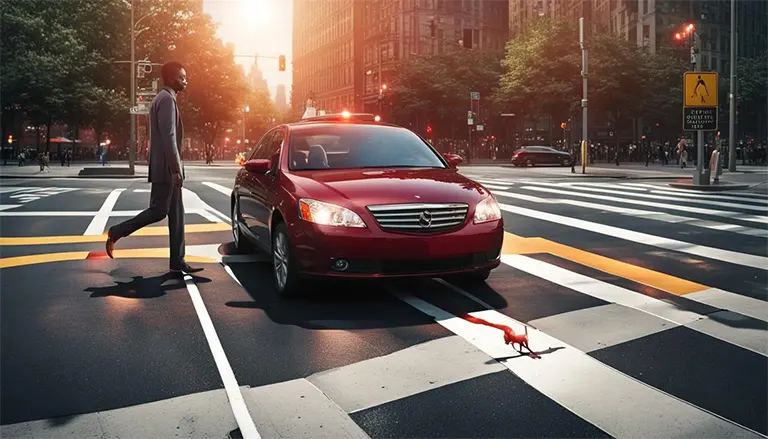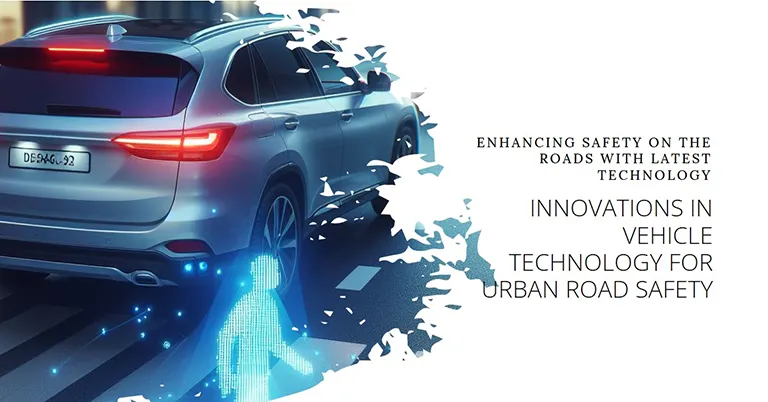What innovations are just wonderful in the latest vehicle technology? Urban and densely populated areas are often bustling hubs of activity where the dense flow of vehicles, pedestrians, and cyclists intersect.
This confluence creates a complex and dynamic environment for transportation, bringing unique challenges for road safety. The intricate web of streets, frequent intersections, and high volume of traffic contribute to a heightened risk of accidents.
These risks are further exacerbated by factors like limited visibility, unpredictable pedestrian movements, and the constant stop-and-go nature of city driving. As urban populations continue to grow and more vehicles hit the roads, the issue of safety in these areas becomes increasingly pressing.
In response to these challenges, there has been a significant push towards harnessing technology to enhance road safety in urban environments.
Advancements in the latest vehicle technology are not just reshaping the vehicles we drive but are also transforming the infrastructure of the cities themselves.
From smart traffic management systems to advanced driver-assistance features, technology is at the forefront of reducing accidents and improving overall safety on the streets.
This article aims to explore a range of innovative technologies that are making a difference in urban road safety.
We will delve into how these technologies function, their impact on reducing accidents, and the future potential they hold in making urban areas safer for everyone who shares the road.
Advanced Driver-Assistance Systems (ADAS)
ADAS technologies have revolutionized vehicle safety by providing drivers with essential tools to avoid accidents. Features like automatic braking, blind-spot detection, and lane-keeping assist have become increasingly common in modern vehicles.
These systems use sensors and cameras to monitor the vehicle’s surroundings and provide real-time feedback to the driver, intervening when necessary to prevent collisions.
Pedestrian Detection Systems
In urban environments, where pedestrians and vehicles often share close quarters, pedestrian detection systems have become vital as the latest vehicle technology.

These systems use advanced algorithms and camera technology to identify pedestrians, even in low-light conditions, and alert the driver. Some systems can automatically apply brakes if a collision is imminent, significantly reducing the risk of accidents involving pedestrians.
Connected Vehicle Technology
Connected vehicle technology allows cars to communicate with each other and with traffic infrastructure. By sharing information about traffic conditions, hazards, and other relevant data, vehicles can anticipate potential issues and adjust their behavior accordingly.
This technology is particularly useful in urban areas, where traffic patterns can be unpredictable and congested.
Traffic Management Systems
Modern traffic management systems use data analytics and artificial intelligence to optimize traffic flow and reduce congestion. By analyzing traffic patterns and adjusting signal timings, these systems can prevent bottlenecks and reduce the likelihood of accidents caused by congestion.
Additionally, smart traffic lights that respond to real-time traffic conditions can help manage the flow of vehicles and pedestrians more efficiently.
Smart Infrastructure
Urban areas are increasingly investing in smart infrastructure that interacts with vehicles and pedestrians. Smart crosswalks that alert drivers when pedestrians are crossing, intelligent street lighting that improves visibility, and road sensors that detect and report hazardous conditions are all examples of how technology is being used to create a safer urban environment.
Electric and Autonomous Vehicles
Electric vehicles (EVs) and autonomous vehicles (AVs) represent a significant shift in urban transportation. EVs are generally considered safer due to their lower center of gravity, which reduces the risk of rollovers.
Autonomous vehicles, while still in the development phase, have the potential to drastically reduce accidents caused by human error. Their advanced sensors and computing power can make split-second decisions that are difficult for human drivers.
Ride-Sharing and Mobility-as-a-Service (MaaS)
Ride-sharing services and MaaS platforms contribute to road safety by reducing the number of vehicles on the road. With fewer cars in urban areas, the likelihood of accidents decreases. These services also promote the use of safer, more modern vehicles equipped with the latest safety technologies.
E-Scooters and Micro-Mobility Solutions
E-scooters and other micro-mobility solutions are becoming popular in urban areas for short-distance travel. While they present new safety challenges, technology is being used to make them safer. Geofencing technology, for example, can restrict where and how fast these devices can operate, reducing the potential for accidents.
Public Awareness and Education
Latest vehicle technology is also being used to enhance public awareness and education regarding road safety. Mobile apps that provide safety tips, virtual reality simulations for driver training, and online platforms for sharing safety information are helping to create a more informed public.
Educated drivers, cyclists, and pedestrians are essential for reducing accidents in urban areas.
The integration of technology into urban transportation is paving the way for safer roads and fewer accidents. From advanced driver-assistance systems to smart infrastructure and autonomous vehicles, these innovations are transforming how we navigate city streets.
As urban areas continue to grow and evolve, it’s crucial to embrace these technologies to ensure the safety of all road users. While technology alone cannot solve all safety challenges, it is a critical component in the effort to reduce accidents and enhance the overall quality of urban life.
With continued innovation and adoption, the future of urban road safety looks promising.

I love all things tech, and I wear many hats – tech lover, business starter, digital marketer, and blogger. I know the ins and outs of Digital Marketing, SEO, SEM, SMM, and how to generate leads. My goal? Making things simple for you with clear guides and reviews. I stumbled upon WordPress while creating my first business site, and I fell in love with it right away. When I’m not building websites, creating content, or boosting clients’ online efforts, I’m focused on staying healthy, hanging out with family, and exploring the world. Connect with me on Facebook, Twitter, Linkedin, or read my complete biography.

